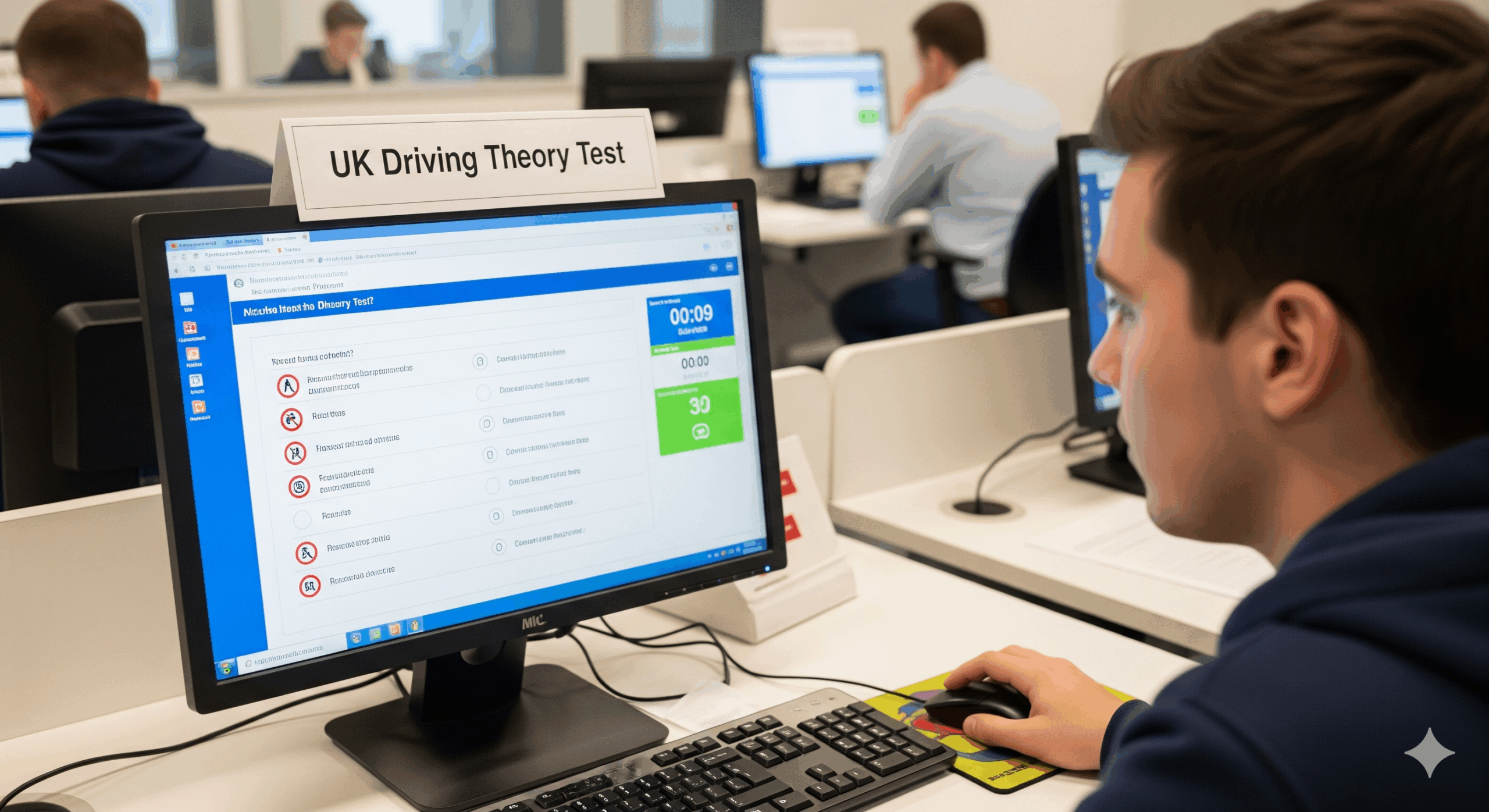Passing your driving theory test is a crucial step on the road to becoming a fully licensed driver. Whether you’re a first-time learner or revisiting the process after a failed attempt, understanding the structure of the theory test, using the right study tools, and employing effective strategies can significantly increase your chances of success. This guide breaks everything down for you, from the types of questions to the best apps and study methods.
Understanding the Driving Theory Test
In the UK, the driving theory test is divided into two main sections: multiple-choice questions and the hazard perception test. Both are designed to ensure that learner drivers not only understand the rules of the road but can also anticipate and respond to potential hazards while driving.
Multiple-Choice Questions
The multiple-choice section typically contains 50 questions, and you must answer at least 43 correctly to pass. These questions cover topics such as:
- Road signs and their meanings
- Rules of the road, including speed limits, right of way, and lane usage
- Safety measures, like seatbelt use and child restraints
- Vehicle handling and maintenance basics
- Environmental awareness and fuel-efficient driving
Questions are presented one at a time, with a time limit of 57 minutes to complete the test. Some questions may involve interpreting diagrams, understanding sequences of events, or identifying correct responses in scenario-based situations.
Hazard Perception Test
After the multiple-choice section, learners take the hazard perception test. This involves watching 14 video clips of everyday road scenarios, each containing at least one developing hazard. Your task is to respond by clicking the mouse as soon as you notice a potential hazard that would cause a driver to take action, like slowing down or changing lanes.
Scoring for hazard perception is based on reaction time: the sooner you identify a developing hazard, the more points you earn, with a maximum of 5 points per hazard. The total pass mark for this section is 44 out of 75 points.
Apps and Tools to Prepare
The rise of technology has made theory test preparation much easier. Using apps and online resources allows learners to practice anywhere, track progress, and identify weak areas.
Recommended Apps
- DVSA Theory Test Kit – Developed by the Driver and Vehicle Standards Agency (DVSA), this app includes official multiple-choice questions, hazard perception clips, and practice tests. It’s highly accurate and mirrors the actual test format.
- Driving Theory Test 4 in 1 Kit – A comprehensive app offering multiple-choice questions, hazard perception, a road signs section, and mock tests.
Online Resources
- Official DVSA website – Offers free practice questions and sample hazard perception clips.
- YouTube tutorials – Many channels walk through hazard perception scenarios, explaining common pitfalls.
- Learner forums – Communities like Reddit’s r/learndriverUK provide tips, experiences, and study hacks.
Study Strategies That Work
Effective preparation requires more than just memorizing road signs. Here are some proven strategies to maximize your chances of passing the theory test:
1. Make a Study Schedule
Consistency is key. Aim to study 15–30 minutes a day rather than cramming all at once. Divide your sessions between multiple-choice questions, hazard perception practice, and reviewing road signs.
2. Practice Hazard Perception Often
The hazard perception test is often the trickiest for learners. Watch clips multiple times, pay attention to developing hazards, and practice clicking early but accurately. The goal is to react promptly without clicking excessively, as too many clicks can reduce your score.
3. Use Active Recall
Rather than passively reading questions or notes, test yourself actively. Cover the answers and attempt to recall information from memory. This technique has been shown to improve retention and exam performance.
4. Focus on Weak Areas
Track which types of questions you get wrong the most. If road signs confuse you, dedicate extra sessions to memorizing and understanding them. For hazard perception, review clips that you initially misjudged.
5. Take Full-Length Mock Tests
Simulate test conditions with timed practice exams. This helps build familiarity with the test format, reduces anxiety, and identifies areas that need improvement. Many apps allow you to replicate the exact exam interface.
6. Learn from Mistakes
After each practice session, review wrong answers and understand why the correct answer is right. Repeating this process ensures mistakes don’t happen on the real test.
Tips for Test Day
Even after thorough preparation, the actual day can be stressful. Here’s how to approach it:
- Arrive early – Give yourself time to relax and acclimatise to the test centre.
- Read questions carefully – Some questions contain tricky wording, so don’t rush.
- Stay calm during hazard perception – Keep your focus on spotting developing hazards, not just reacting randomly.
- Trust your preparation – Confidence comes from practice.
Ready to Tackle the Theory Test?
Passing the driving theory test is achievable with the right combination of preparation, practice, and mindset. Understanding the structure of the test, using apps and online resources, and following a consistent study strategy will put you in the best position to succeed. Remember, the theory test is not just a hurdle, it’s a vital step toward becoming a safe, confident, and responsible driver. With diligent study and practical preparation, you’ll be ready to ace both the multiple-choice and hazard perception sections and move one step closer to your full driving licence.
Your Next Steps to Success
At APass4U, we know that preparing for your driving theory test is just the beginning of your journey to becoming a confident driver. That’s why we offer a wide range of driving lessons and intensive driving courses designed to help you build your skills quickly and effectively once you’ve passed the theory stage. Whether you prefer to learn at a steady pace or want to fast-track your way to test readiness, our experienced instructors are here to support you every step of the way. With the right preparation and the right training, you’ll soon be on the road to success.


